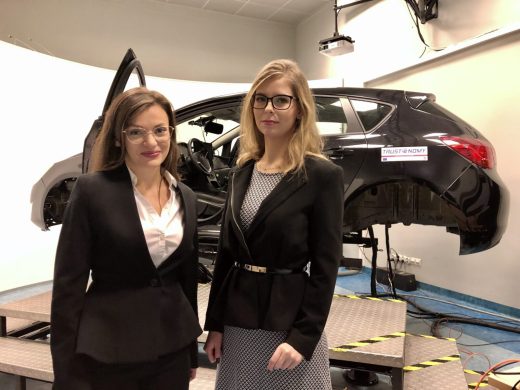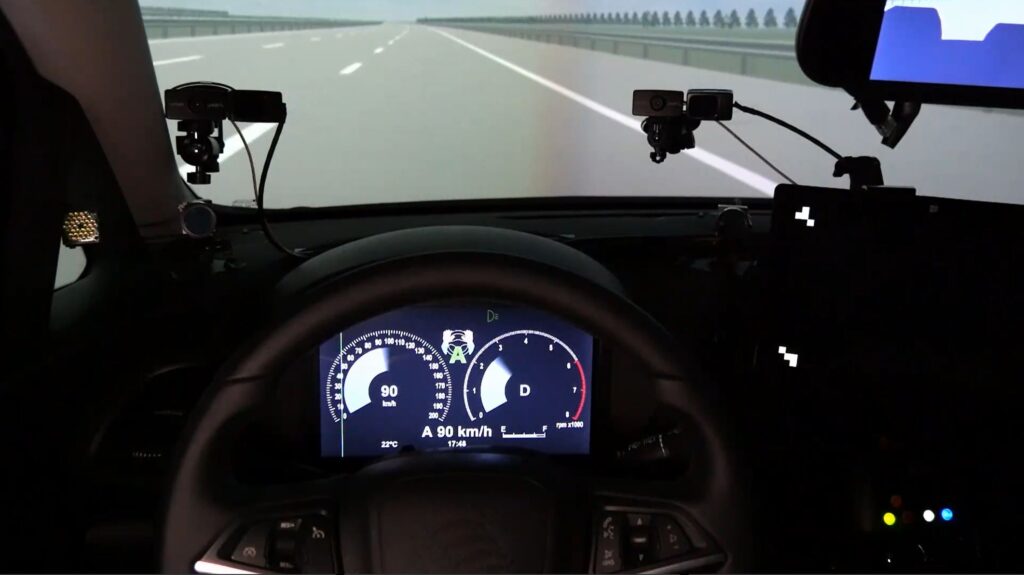Blog
Interview with CK:PAP experts for EFA
Motor Transport Institute (pol. Instytut Transportu Samochodowego, ITS), is one of the partners of the Trustonomy project. In this interview, Małgorzata Pełka and Aleksandra Rodak tell us more about ITS leading role on driver training pillar. Trustonomy (Trust + Autonomy) aims to increase the trust and acceptance of highly automated vehicles through the research, experimentation and evaluation of technologies and approaches relevant to the development of autonomous driving, in relation to different categories of users (professional and non-professional), road transport vehicles and driving conditions. Trustonomy is an EU project funded within the Research and Innovation Programme Horizon 2020 (Grant Agreement number 815003).

1. What are the goals, challenges and assumptions of the driver training pillar in the Trustonomy project?
Aleksandra Rodak: Trustonomy identifies and develops novel curricula for emerging driver training needs in the non-fully autonomous era. Our mission within this pillar is multi-track. On the one hand, we focus on the human being responsible for driving the vehicle. Hence, our goal is to raise awareness of the need to understand how systems should be properly used in order to achieve safe human-vehicle interaction. On the other hand, we’d like to draw the legislators’ attention to the need to adapt the training process to the changing reality. In this regard, it is necessary to change the perception of driving automation systems. Legislators need to understand that road safety depends mainly on ourselves – the people. Our decisions behind the wheel should be conscious, and to achieve this, drivers should understand how various systems in their vehicles work and when their performance may be disrupted. Considering this, it is also necessary to foster drivers’ behaviour adaptations, including making them aware of the opportunities and threats resulting from the implementation of driving automation systems.
2. How an ideal training should be composed? What should be the greatest emphasis when teaching the use of automation systems?
Małgorzata Pełka: First of all, the training should be adequate. It means the course should be suitable for the vehicle type, regularly updated and compliant with legal requirements. Next there is usefulness, ease of understanding and efficiency. The training should be concise, while being comprehensive at the same time. Basing on our experiences and knowledge accumulated within the project, an ideal course consists of three parts. These are theoretical training, practical training and evaluation. Individual topics should be presented at appropriate stages so that the trainee absorbs it properly. Beginning with theoretical training, you should make an introduction providing contextualization, discussing system operation, messages that can be displayed and, above all, the limitations of the system. Limitations are boundaries beyond which indications provided to the driver may not be true or may not occur at all. Then, in the practical training, all possible road scenarios should be practiced, so that the driver knows where to expect appropriate messages and how he should react in specific situations. Finally, the information provided during the course should be summarized and all gained knowledge has to be verified. For this reason, questionnaires should be prepared in order to measure training efficiency.
3. What is the Trustonomy approach? What do you pay the most attention to and what conclusions can you draw based on your experiences?
Aleksandra Rodak: We are definitely taking the advantage of having professional driving improvement trainers and qualified traffic psychologists in the project. They were providing valuable insights for curricula development. Thanks to automotive industry partners, we know exactly what are system operation principles and limitations, which are often not clearly defined in manuals. All together we decided to develop novel curricula, and go even a step further. In Trustonomy, we are taking a revolutionary approach towards driver training by designing an ICT-based online tool. An advanced e-learning platform resulting from an expert-based analysis carried out in the project aims to teach driving support systems in a simple and safe way. The content and materials used in the e-learning meet the criteria and the detailed map of competences extracted within the project. The novelty behind the platform is its innovative form giving an opportunity to transfer both theoretical and semi-practical knowledge. A semi-automatic simulation imitates the operation of the automation system while getting the trainee actively involved in the driving task. The research carried out in the project shows that this form of presenting the topic is participant-friendly. It combines the advantages of practical training conducted by a professional trainer with the intuitiveness and accessibility of e-learning. To check the effectiveness of such training, we compared it with self-training based on reading a single-page manual and a practical course. The tests were carried out on a driving simulator, thanks to which it was possible to study driver reactions in risky situations while maintaining safe and controlled conditions. The mean reaction time (counted between warning occurrence and performing an action to avoid collision) for all three types of training was 2,86 seconds. The group with practical training had the shortest reaction time of 2,29 seconds. The e-learning group was placed in between with a result of 2,65 seconds (+0,36 sec). The longest reaction time was achieved by those participants who were reading a manual – 3,65 seconds (+1,36 sec). The difference between practical and e-learning group is quite short – 0,36 seconds only. However, 1 second difference between e-learning and manual reading is alarming.
4. How do you consider the potential impact of the training on the level of road safety?
Małgorzata Pełka: Let’s consider the reaction time differences given in a previous question. In our research scenario drivers were asked to drive with a speed of 100 km/h. Within a second a car travels around 30 meters. It’s more than half the length of the Olympic pool, and that’s exactly the excess distance travelled by our manual reading group without performing any action to avoid collision (comparing to e-learning participants). This shows how important the training is. Imagine what could happen in that second and who could be in your way within 30 meters. This time and distance were wasted, and could potentially save someone’s life or health. That is why we want to raise the interest of all units responsible for adapting courses to changing realities. We want to show how important it is to introduce improvements in this area. The training we designed lasted 15-20 minutes. As you can see, this showed to be enough to see a clear change in driver behaviour. Correct understanding of the messages and limitations of driving automation systems has a huge impact on road safety. It is important that this is understood and that appropriate adjustments to the regulations are introduced at various levels. For example, in Poland, a special team of experts is dealing with the issue of autonomy. We would like the employees of the Connected and Autonomous Vehicles Competence Center, established in Motor Transport Institute to keep working on the topic and raise driver’s awareness. We sincerely hope that the governments of other countries will be interested in the subject and that we will work together to increase road safety.
Source: EFA






